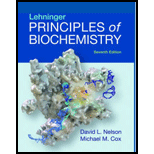
Concept explainers
(a)
To determine: The size of a typical eukaryotic cell with cellular diameter of
Introduction:
The eukaryotic cells are more complex than the prokaryotic cells and they vary based on the structure and functions. The eukaryotes have been evolved from the unicellular organisms in the timeline of evolution.
(a)
Explanation of Solution
The diameter (
The size of a typical eukaryotic cell with cellular diameter of
(b)
To determine: The number of molecules of actin in a myocyte of diameter
Introduction:
The eukaryotes have been evolved from the unicellular organisms in the timeline of evolution. The second phase of evolution has been started when the levels of multicellularity diversify the organisms into algal species,
(b)
Explanation of Solution
The diameter (
The diameter (
The volume of the given myocyte is as follows:
The volume of the given actin is as follows:
The number of actin molecules in the given myocyte is as follows:
The number of molecules of actin in a myocyte (if the diameter of actin molecules is
(c)
To determine: The number of molecules of mitochondria in a liver cell of diameter
Introduction:
The eukaryotic cells are more complex than the prokaryotic cells and they vary based on structure and functions. The eukaryotes have been evolved from the unicellular organisms in the timeline of evolution. Mitochondrion is part of a eukaryotic cells and the energy storage of any cell.
(c)
Explanation of Solution
The diameter (
The diameter (
The volume of the given liver is as follows:
The volume of the given mitochondria is as follows:
The number of mitochondria molecules in the given myocyte is as follows:
The number of mitochondria in a liver cell (if the diameter of action molecules is
(d)
To determine: The number of molecules of glucose be present in spherical eukaryotic cell if the cellular concentration is
Introduction:
Glucose is known as a simple sugar molecule which possess a molecular formula
(d)
Explanation of Solution
The volume of the given eukaryotic cell is
One cubic centimeter is equal to one millimeter. Therefore, the volume is
The number of molecules in one liter of
The total number of glucose in given cell is as follows:
The number of molecules of glucose be present in spherical eukaryotic cell if the cellular concentration is
(e)
To determine: The number of glucose molecules in hexokinase molecule if the hexokinase concentration is
Introduction:
Glucose is known as a simple sugar molecule which possess a molecular formula
(e)
Explanation of Solution
The concentration of hexokinase molecule is
One molecule of hexokinase will have
The number of glucose molecules in hexokinase molecule (if the hexokinase concentration is
Want to see more full solutions like this?
Chapter 1 Solutions
Lehninger Principles of Biochemistry
 BiochemistryBiochemistryISBN:9781319114671Author:Lubert Stryer, Jeremy M. Berg, John L. Tymoczko, Gregory J. Gatto Jr.Publisher:W. H. Freeman
BiochemistryBiochemistryISBN:9781319114671Author:Lubert Stryer, Jeremy M. Berg, John L. Tymoczko, Gregory J. Gatto Jr.Publisher:W. H. Freeman Lehninger Principles of BiochemistryBiochemistryISBN:9781464126116Author:David L. Nelson, Michael M. CoxPublisher:W. H. Freeman
Lehninger Principles of BiochemistryBiochemistryISBN:9781464126116Author:David L. Nelson, Michael M. CoxPublisher:W. H. Freeman Fundamentals of Biochemistry: Life at the Molecul...BiochemistryISBN:9781118918401Author:Donald Voet, Judith G. Voet, Charlotte W. PrattPublisher:WILEY
Fundamentals of Biochemistry: Life at the Molecul...BiochemistryISBN:9781118918401Author:Donald Voet, Judith G. Voet, Charlotte W. PrattPublisher:WILEY BiochemistryBiochemistryISBN:9781305961135Author:Mary K. Campbell, Shawn O. Farrell, Owen M. McDougalPublisher:Cengage Learning
BiochemistryBiochemistryISBN:9781305961135Author:Mary K. Campbell, Shawn O. Farrell, Owen M. McDougalPublisher:Cengage Learning BiochemistryBiochemistryISBN:9781305577206Author:Reginald H. Garrett, Charles M. GrishamPublisher:Cengage Learning
BiochemistryBiochemistryISBN:9781305577206Author:Reginald H. Garrett, Charles M. GrishamPublisher:Cengage Learning Fundamentals of General, Organic, and Biological ...BiochemistryISBN:9780134015187Author:John E. McMurry, David S. Ballantine, Carl A. Hoeger, Virginia E. PetersonPublisher:PEARSON
Fundamentals of General, Organic, and Biological ...BiochemistryISBN:9780134015187Author:John E. McMurry, David S. Ballantine, Carl A. Hoeger, Virginia E. PetersonPublisher:PEARSON





